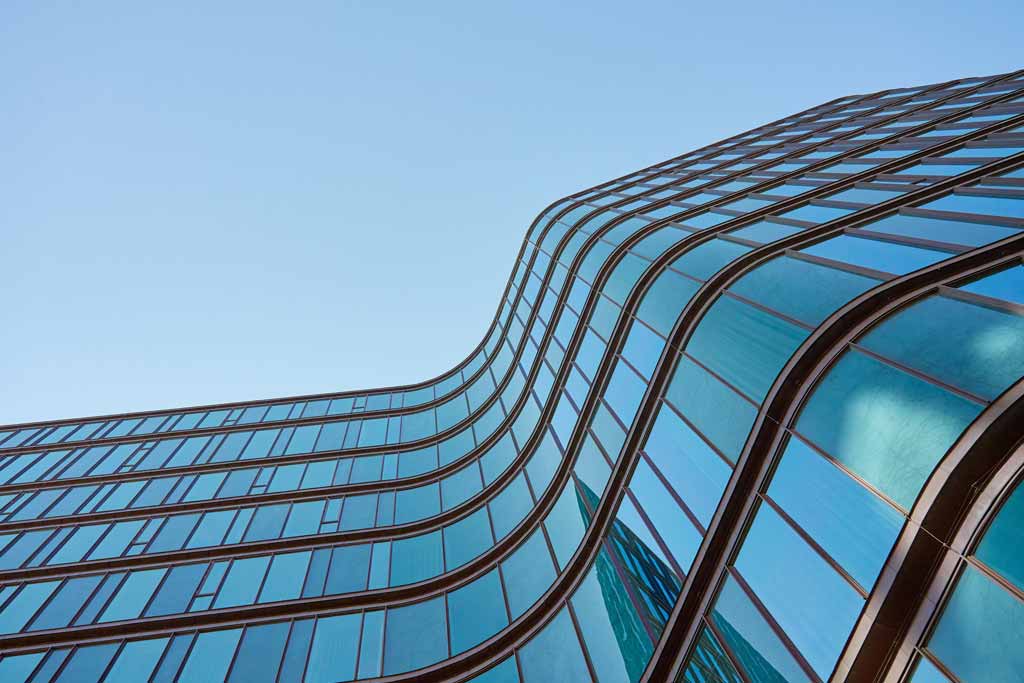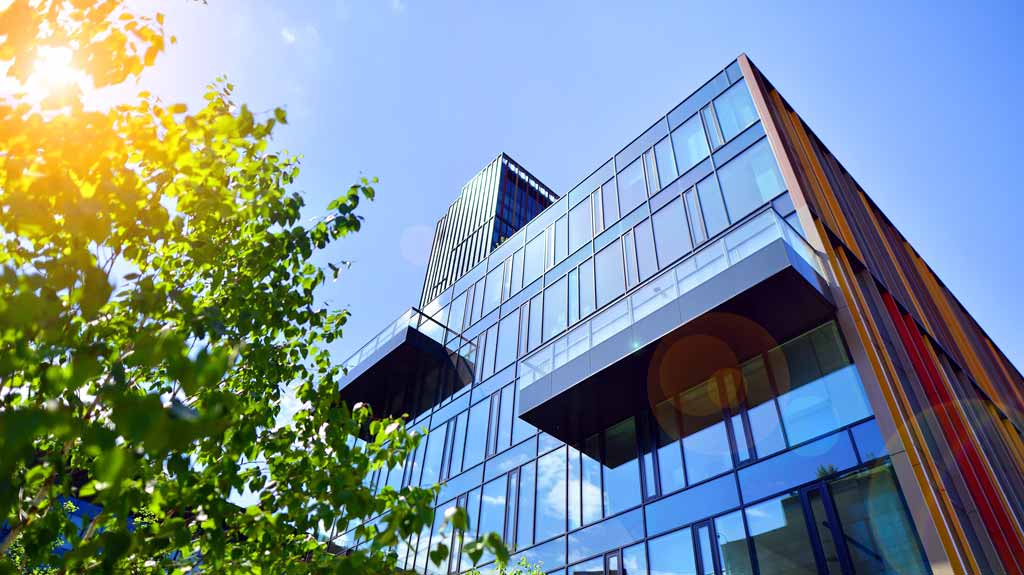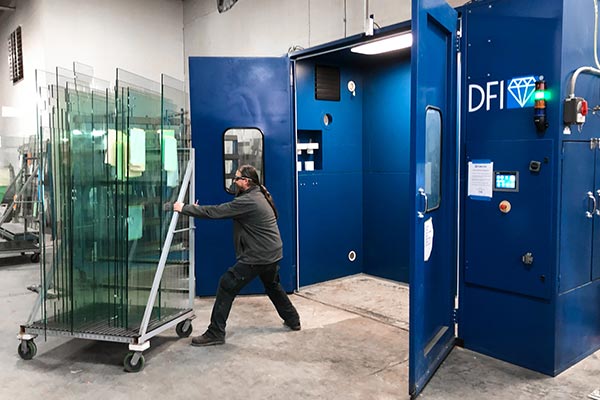Innovative Hydrophobic Glass Coating Solutions for Buildings
Glass is an essential part of modern architecture, but maintaining its clarity and durability can be challenging. Luckily, with hydrophobic glass coating solutions, architects and builders can now ensure better protection, reduced cleaning costs, and improved energy output for high-performance windows. These advanced coatings are designed to bond to the glass and provide long-lasting protection for buildings.

What Is a Hydrophobic Glass Coating?
Hydrophobic glass coatings are protective layers applied to architectural glass. These coatings create an invisible barrier that repels water, dirt, and other contaminants from sticking to the surface of the glass. The result? Windows that stay cleaner longer and require less maintenance. When applied to building glass, these coatings make glass surfaces not only more durable but also more energy efficient.
Benefits of Hydrophobic Glass Coatings for Buildings
- Protects the Glass: Hydrophobic coatings act as a shield for building glass, providing an extra layer of protection. These protective coatings for glass in construction reduce wear and tear caused by weather, etching from cement slurry, and other environmental factors, helping to extend the life of architectural glass.
- Enhances Value and Appearance: Window building glass coated with hydrophobic coatings can help enhance the value and sustainability of glass. In some cases, the coating can also enhance a building’s overall energy efficiency by optimizing high-performance windows, keeping them cleaner for longer. In addition, some hydrophobic coatings, like Diamon-Fusion, have UV resistant properties that prevent the coating from breaking down in sunlight, offering long-term sustainability.
- Easier Cleaning and Maintenance: Cleaning glass in high-rise buildings can be a hassle, but hydrophobic coatings significantly reduce the frequency of cleaning. Water and dirt slide off the glass surface effortlessly, saving time, money, and effort in maintenance. These cleaning coatings are also ideal for windows in homes, offices, and commercial buildings.

How Does It Work?
The hydrophobic coating bonds to the glass surface at a molecular level, creating a protective layer that is both durable and invisible. Once applied, water and other liquids bead up and roll off the surface, and any stains that do form on the glass overtime can easily be washed and/or wiped away. This water-repellent property is why these types of coatings are often called low maintenance. Additionally, they can help prevent mineral deposits, streaks, and stains from forming on the glass.
Applications in Architectural Glass
Hydrophobic glass coatings have become popular in various architectural applications. Whether for office towers, retail spaces, or residential buildings, these protective glass coatings are a smart investment for any construction project. They can be applied to windows, skylights, glass facades, and even shower enclosures.
Advantages of Using Glass Coatings in Construction
- Water Repellent: Keeps glass cleaner for longer by repelling water and preventing the buildup of grime.
- Enhances value: Optimizes the appearance, value, and energy output of building windows by helping to keep the glass cleaner for longer.
- Durability: Protects against environmental wear and extends the lifespan of architectural glass.
- Low Maintenance: Reduces the need for frequent cleaning and maintenance.
- Excellent protection: Helps prevent etching and staining from cement slurry and outside pollutants like dirt and dust. This can help save thousands of dollars in glass replacements.
Hydrophobic Coatings and Reducing Maintenance Costs
One of the most important benefits of hydrophobic coatings on building glass is their ability to reduce maintenance (cleaning) costs. Architectural glass is a significant investment and replacing/cleaning such glass can be extremely costly, inefficient, and unsustainable. By adding a protective layer, hydrophobic coatings can help prevent contaminants and pollutants from sticking to the glass, reducing the time and frequency of cleaning. This reduction in cleaning leads to significant cost savings, making these coatings a cost-effective solution for both residential and commercial buildings.
The Future of Building Glass Coatings
With the growing demand for sustainability, energy-efficiency, and reduced maintenance costs, the use of hydrophobic coatings will only continue to rise. As technology advances, we can expect these coatings to offer even better protection and higher energy output. Coated window building glass is already making a difference in construction, and the future holds even more innovative possibilities.
The Bottom Line
Hydrophobic glass coatings offer a cutting-edge solution for maintaining and protecting architectural glass. These coatings not only protect the glass but also help contribute to better energy output and reduced maintenance efforts. For builders and architects looking for long-term, cost-effective solutions, protective glass coatings are the way to go.
Originally published October 07, 2024 10:00:00 AM, updated October 07, 2024

About Diamon-Fusion International
Diamon-Fusion International (DFI) is one of the largest hydrophobic coating suppliers in the world. The company specializes in the development of easy-to-clean, protective coatings, restoration products, and automated machinery for the glass industry, as well as other silica-based surfaces.
Social Media Channels
Innovative Hydrophobic Glass Coating Solutions for Buildings
Glass is an essential part of modern architecture, but maintaining its clarity and durability can be challenging. Luckily, with hydrophobic glass coating solutions, architects and builders can now ensure better protection, reduced cleaning costs, and improved energy output for high-performance windows. These advanced coatings are designed to bond to the glass and provide long-lasting protection for buildings.

What Is a Hydrophobic Glass Coating?
Hydrophobic glass coatings are protective layers applied to architectural glass. These coatings create an invisible barrier that repels water, dirt, and other contaminants from sticking to the surface of the glass. The result? Windows that stay cleaner longer and require less maintenance. When applied to building glass, these coatings make glass surfaces not only more durable but also more energy efficient.
Benefits of Hydrophobic Glass Coatings for Buildings
- Protects the Glass: Hydrophobic coatings act as a shield for building glass, providing an extra layer of protection. These protective coatings for glass in construction reduce wear and tear caused by weather, etching from cement slurry, and other environmental factors, helping to extend the life of architectural glass.
- Enhances Value and Appearance: Window building glass coated with hydrophobic coatings can help enhance the value and sustainability of glass. In some cases, the coating can also enhance a building’s overall energy efficiency by optimizing high-performance windows, keeping them cleaner for longer. In addition, some hydrophobic coatings, like Diamon-Fusion, have UV resistant properties that prevent the coating from breaking down in sunlight, offering long-term sustainability.
- Easier Cleaning and Maintenance: Cleaning glass in high-rise buildings can be a hassle, but hydrophobic coatings significantly reduce the frequency of cleaning. Water and dirt slide off the glass surface effortlessly, saving time, money, and effort in maintenance. These cleaning coatings are also ideal for windows in homes, offices, and commercial buildings.

How Does It Work?
The hydrophobic coating bonds to the glass surface at a molecular level, creating a protective layer that is both durable and invisible. Once applied, water and other liquids bead up and roll off the surface, and any stains that do form on the glass overtime can easily be washed and/or wiped away. This water-repellent property is why these types of coatings are often called low maintenance. Additionally, they can help prevent mineral deposits, streaks, and stains from forming on the glass.
Applications in Architectural Glass
Hydrophobic glass coatings have become popular in various architectural applications. Whether for office towers, retail spaces, or residential buildings, these protective glass coatings are a smart investment for any construction project. They can be applied to windows, skylights, glass facades, and even shower enclosures.
Advantages of Using Glass Coatings in Construction
- Water Repellent: Keeps glass cleaner for longer by repelling water and preventing the buildup of grime.
- Enhances value: Optimizes the appearance, value, and energy output of building windows by helping to keep the glass cleaner for longer.
- Durability: Protects against environmental wear and extends the lifespan of architectural glass.
- Low Maintenance: Reduces the need for frequent cleaning and maintenance.
- Excellent protection: Helps prevent etching and staining from cement slurry and outside pollutants like dirt and dust. This can help save thousands of dollars in glass replacements.
Hydrophobic Coatings and Reducing Maintenance Costs
One of the most important benefits of hydrophobic coatings on building glass is their ability to reduce maintenance (cleaning) costs. Architectural glass is a significant investment and replacing/cleaning such glass can be extremely costly, inefficient, and unsustainable. By adding a protective layer, hydrophobic coatings can help prevent contaminants and pollutants from sticking to the glass, reducing the time and frequency of cleaning. This reduction in cleaning leads to significant cost savings, making these coatings a cost-effective solution for both residential and commercial buildings.
The Future of Building Glass Coatings
With the growing demand for sustainability, energy-efficiency, and reduced maintenance costs, the use of hydrophobic coatings will only continue to rise. As technology advances, we can expect these coatings to offer even better protection and higher energy output. Coated window building glass is already making a difference in construction, and the future holds even more innovative possibilities.
The Bottom Line
Hydrophobic glass coatings offer a cutting-edge solution for maintaining and protecting architectural glass. These coatings not only protect the glass but also help contribute to better energy output and reduced maintenance efforts. For builders and architects looking for long-term, cost-effective solutions, protective glass coatings are the way to go.
Originally published October 07, 2024 10:00:00 AM, updated October 07, 2024
READY TO PROTECT YOUR SOLAR PANELS?
Diamon-Fusion® is available through a network of Certified Diamon-Fusion® Dealers throughout the country who are professionally trained and equipped to protect your solar panel surfaces. For any new (or existing) glass panel applications, please contact our certified solar panel applicator: Conserva Care. They are equipped to handle any applications.
About Diamon-Fusion International
Diamon-Fusion International (DFI) is one of the largest hydrophobic coating suppliers in the world. The company specializes in the development of easy-to-clean, protective coatings, restoration products, and automated machinery for the glass industry, as well as other silica-based surfaces.
